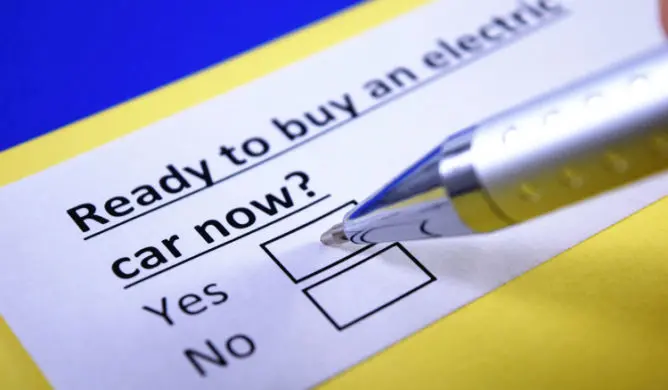Time to read : 4 Minutes
Is It Time To Make The Switch To An Electric Vehicle?
If you’re thinking about buying your next car, the growing buzz around electric vehicles, as well as the eco-friendly motivation for having one, will probably have you considering one important question: is it time to make the switch to an electric car?
Increased sales of electric cars are proof of the growing interest globally. In Australia, new electric car options hit the new car market almost monthly.
So now that there are more makes and models to choose from, and a national infrastructure to accommodate their safe and efficient use is (slowly) improving, is this the right time to make your next car an EV?
For many buyers, many motoring experts would say ‘yes’. But there are still some critical caveats.
To help you decide if your next car should be an EV, there are several important factors to consider:
Environmental
According to the Australian Conservation Foundation (ACF), when it comes to the pros and cons of electric vehicles, there are lots more pros.
Environmentally speaking, says the ACF, Australia is lagging behind on tackling transport emissions. In fact, Australia’s per capita transport emissions are 45% higher than the OECD average.
“Transport is a significant contributor to Australia’s greenhouse gas emissions, and we’re now at a real inflection point where we can realistically look at the benefits from a fast and complete transition to EVs in this country,” says Dr Eamon McGinn, partner at Deloitte Access Economics, and principal author of the research and report: Local Community Benefits of Zero Emission Vehicles in Australia.
But whether EVs are actually more ethically manufactured and greener on every level is more complex.
The materials needed to make a high-voltage EV car battery can come with an environmental, social and geopolitical impact – depending on where they come from.
Just as with drilling for oil, extracting rare earth metals from the ground isn’t a clean process. New battery developments will see that change.
Economic
The Deloitte/ACF research from 2022 also showed that:
“The approach to road transport will cost Australia $865 billion between 2022 and 2050.
But a staggering $492 billion can be saved if there’s a complete transition to electric vehicles and increased use of public buses by 2035.”
Running costs
Although crunching the numbers with community in mind does seem to be in favour of EVs saving money, the majority of people are still driven by the balance in their own personal bank account.
When comparison car website Which car? explored the running costs of the 2023 MG ZST Excite vs the 2023 MG ZS EV Excite, the price difference between running costs was clear:
The cost of fuel per 100km in the petrol car tallied $14.20.
Total servicing cost, meanwhile, was $1911 at 72 months (60,000km).
The cost of electricity per 100km added up to just $2.56.
And the servicing for the same 72-month (60,000km) milestone in the EV? $804.
Drive-away price and depreciation
When comparing the same car as above, the petrol model ($30,990) vs EV ($43,990) offers obvious savings. But then there’s depreciation …
Estimated depreciation on the petrol model was 42–34%, which saw the residual value after three years hovering around $17,950-$20,350, while residual value of the EV version holding around $25,200–$28,200, which represents a depreciation of 44–37%.
Insurance
Comparing the cost of comprehensive car insurance for a 30-year-old female driver in a city setting, showed that, on average, the annual premium for the petrol-run ZST Excite was $1284. For the EV, the same insurance premium was $1498.
Electric cars cost more to insure because of the higher price tag to buy, plus the small local parts supply chain, plus there are fewer trained EV technicians in Australia.
If you choose to buy a higher performing EV, the fast acceleration times on offer in the Kia EV6, the Porsche Taycan and the Tesla Model 3 would see you pay even more for insurance.
Battery life
Battery longevity, accessible charging infrastructure and safety are all important issues. And it’s here that EVs still have a long way to go.
If you can access a solar panel system, recharging your EV can (almost), when used with a home battery storage system at the right time of day. That will see more savings add up.
The bottom line
According to the comparison of key factors related to the purchase and upkeep of the two car types mentioned above, anyone who chooses the MG ZS EV could expect to save around 47% in running costs alone, compared to the petrol car – and that may be a positive reason to think about making your next car an electric one.
Go deeper: Car trends in Australia
Financial disclaimer
The information contained on this web page is of general nature only and has been prepared without taking into consideration your objectives, needs and financial situation. You should check with a financial professional before making any decisions. Any opinions expressed within an article are those of the author and do not specifically reflect the views of Compare Club Australia Pty Ltd.
